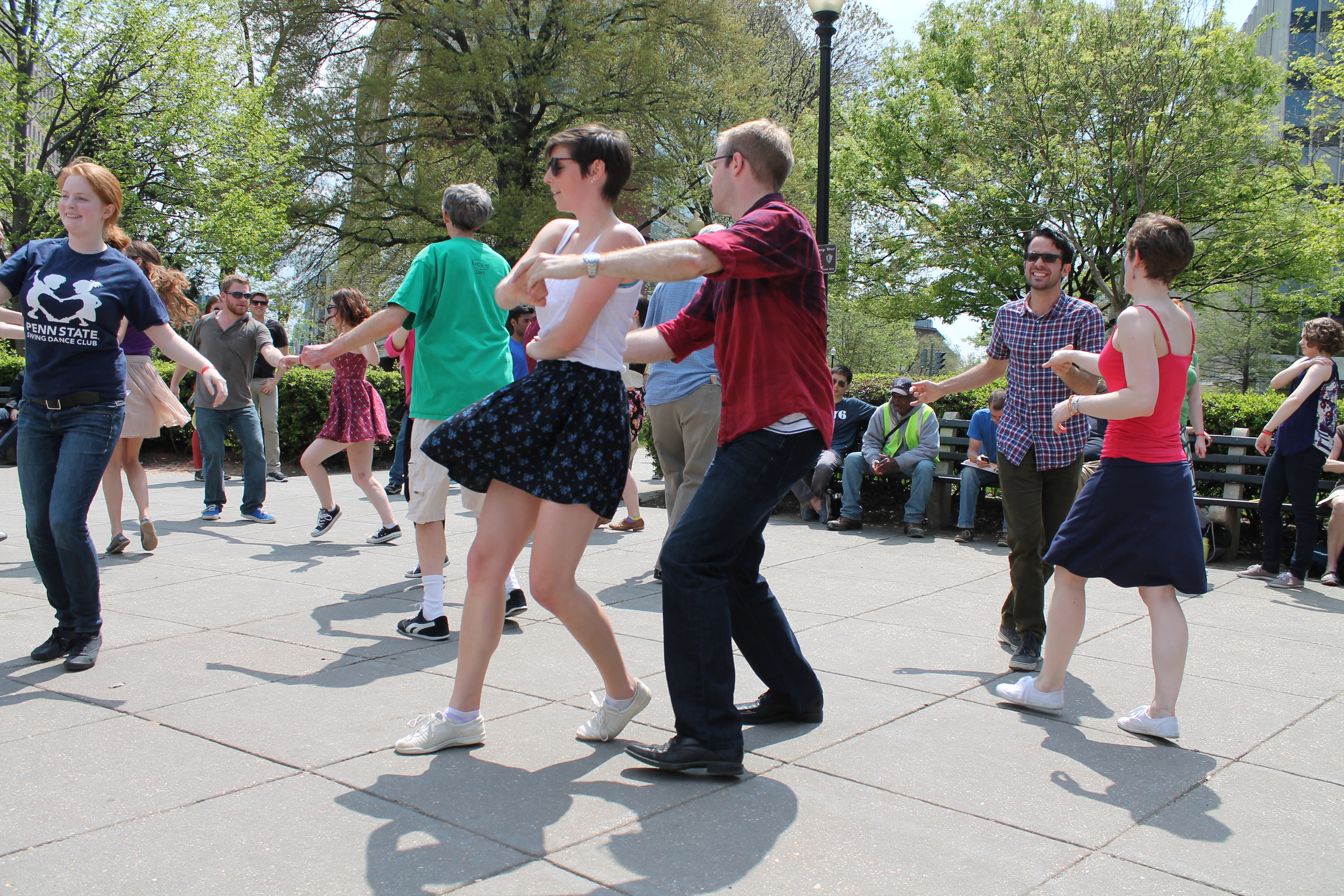|
Skip Jive
A British dance, descended from the jazz dances of the 1930s and 1940s jive and ultimately from the Lindy Hop. Danced to trad jazz Trad jazz, short for "traditional jazz", is a form of jazz in the United States and Britain in the 1930s, 1940s, 1950s and 1960s, played by musicians such as Chris Barber, Acker Bilk, Kenny Ball, Ken Colyer and Monty Sunshine, based on a re ... music, was popular in England in the 1950s and 1960s in jazz clubs in London; notably Jazzshows (now the 100 Club, 100 Oxford St) and the Ken Colyer club (Studio 51 Gt Newport St. now closed). There were also jazz club events at most large towns, especially in the south of England (e.g. Guildford Surrey, Farnborough Hants, Bexley Kent) where trad jazz enthusiasts congregated and would "skip jive" all evening. It is still danced to a limited extent today. See also * Wikibooks: Swing Dancing * http://www.howtojive.com/intro-skip-jive.htm Swing dances {{dance-stub ... [...More Info...] [...Related Items...] OR: [Wikipedia] [Google] [Baidu] |
Jive (dance)
The jive is a dance style that originated in the United States from the African Americans in the early 1930s. The name of the dance comes from the name of a form of African-American vernacular slang, popularized in the 1930s by the publication of a dictionary by Cab Calloway, the famous jazz bandleader and singer. In competition ballroom dancing, the jive is often grouped with the Latin-inspired ballroom dances, though its roots are based on swing dancing and not Latin dancing. History To the players of swing music in the 1930s and 1940s, "jive" was an expression denoting glib or foolish talk. American soldiers brought Lindy Hop/jitterbug to Europe around 1940, where this dance swiftly found a following among the young. In the United States, "swing" became the most common word for the dance, and the term "jive" was adopted in the UK. Variations in technique led to styles such as boogie-woogie and swing boogie, with "jive" gradually emerging as the generic term in the UK.Pa ... [...More Info...] [...Related Items...] OR: [Wikipedia] [Google] [Baidu] |
Lindy Hop
The Lindy Hop is an American dance which was born in the Black communities of Harlem, New York City, in 1928 and has evolved since then. It was very popular during the swing era of the late 1930s and early 1940s. Lindy is a fusion of many dances that preceded it or were popular during its development but is mainly based on jazz dance, jazz, tap dance, tap, breakaway (dance), breakaway, and Charleston (dance), Charleston. It is frequently described as a jazz dance and is a member of the swing (dance), swing dance family. In its development, the Lindy Hop combined elements of both partnered and solo dancing by using the movements and improvisation of African-American dances along with the formal eight-count structure of European partner dances – most clearly illustrated in the Lindy's basic step, the swingout. In this step's open position, each dancer is generally connected hand-to-hand; in its closed position, leads and follows are connected as though in an embrace on one ... [...More Info...] [...Related Items...] OR: [Wikipedia] [Google] [Baidu] |
Trad Jazz
Trad jazz, short for "traditional jazz", is a form of jazz in the United States and Britain in the 1930s, 1940s, 1950s and 1960s, played by musicians such as Chris Barber, Acker Bilk, Kenny Ball, Ken Colyer and Monty Sunshine, based on a revival of New Orleans Dixieland jazz, on trumpets, trombones, clarinets, tambourines, banjos, double basses, saxophones, Hammond organs, pipe organs, pianos, electric basses, guitars (typically electric guitars) and drums and cymbals, with a populist repertoire which also included jazz versions of pop songs and nursery rhymes. Beginnings of revival A Dixieland revival began in the United States on the West Coast in the late 1930s as a backlash to the Chicago style, which was close to swing. Lu Watters and the Yerba Buena Jazz Band, and trombonist Turk Murphy, adopted the repertoire of Joe "King" Oliver, Jelly Roll Morton, Louis Armstrong and W. C. Handy: bands included banjo and tuba in the rhythm sections. A New Orleans-based traditional revi ... [...More Info...] [...Related Items...] OR: [Wikipedia] [Google] [Baidu] |
Swing Dancing
Swing dance is a group of social dances that developed with the swing style of jazz music in the 1920s–1940s, with the origins of each dance predating the popular "swing era". Hundreds of styles of swing dancing were developed; those that have survived beyond that era include Lindy Hop, Balboa, Collegiate Shag, and Charleston. Today, the best-known of these dances is the Lindy Hop, which originated in Harlem in the early 1930s. While the majority of swing dances began in African American communities as vernacular African American dances, some influenced swing-era dances, like Balboa, developed outside of these communities. "Swing dance" was not commonly used to identify a group of dances until the latter half of the 20th century. Historically, the term "Swing" referred to the style of jazz music, which inspired the evolution of the dance. Jitterbug is any form of swing dance, though it is often used as a synonym for the six-count derivative of Lindy Hop called "East Coast ... [...More Info...] [...Related Items...] OR: [Wikipedia] [Google] [Baidu] |


